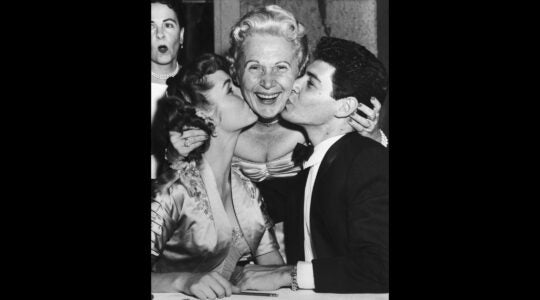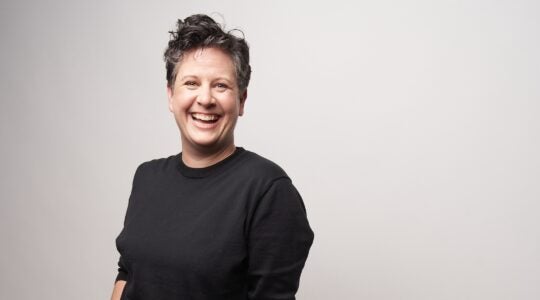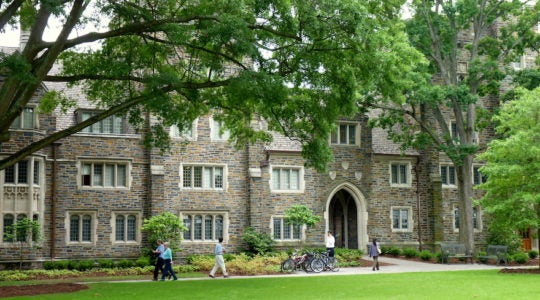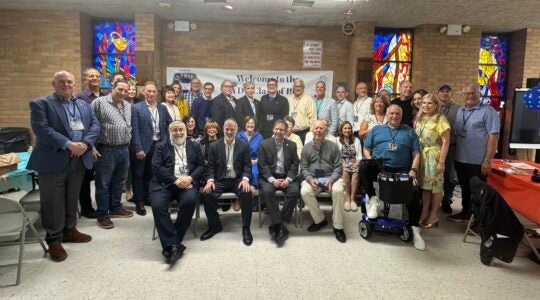For 300 years chasidism has been synonymous in the public mind with a fervent Orthodox flamboyance that could find transcendence in everything from a fallen leaf to a Yom Kippur whistle. At a three-day conference last week in Manhattan, a ìneo-chasidic flagî was planted in the Jewish landscape, with more than 200 fervently liberal Jews staking a claim to chasidismís mysticism and passion, shamanism and eros, authenticity and defiance.
They called it the next great trend in Jewish spirituality.
Arthur Green, former leader of the Reconstructionist seminary and now a professor of Jewish thought at Brandeis University, told the conference that whereas chasidism was a rebellion against the elitist Lithuanian yeshivas, neo-chasidim is a rebellion by those who were ìleft cold by the shallow,î suburban liberal temples in which American Judaism somehow lost its way.
As conference participant Rabbi Arthur Waskow, director of the Shalom Center in Philadelphia, explained to The Jewish Week, what makes it decidedly ìneo,î though, is that the rebellion is against the cold and the pompous, not against the religious reformations that many classical chasidim still basically reject, such as feminism, universalism, the belief in ecology as a primary commandment and a non-triumphalist approach.
The transdenominational conference, officially titled ìAwakening, Yearning, and Renewal: A Conference on the Hasidic Roots of Contemporary Jewish Spiritual Expression & A Festival of Neo-Hasidic Spirituality,î was sponsored by The Spirituality Institute, the hosting Jewish Community Center in Manhattan, the Institute for Advanced Theology at Bard College and UJA-Federation of New York.
If the Baal Shem Tov is credited with founding chasidim and the rebbe model of leadership, one major session at the conference declared the neo-chasidic rebbes to be Rabbis Shlomo Carlebach, Zalman Schachter-Shalomi and Abraham Joshua Heschel. Rabbi Carlebach died in 1994 and Rabbi Heschel in 1972, but they remain the essence of neo-chasidism for those who come out of their Orthodox and Conservative movements, respectively.
It is a hallmark of the movementís informality that ìShlomoî and ìZalman,î for example, are known by their first names rather than by any titles; ìReb Zalmanî is as formal as it gets. Reb Zalman was ordained by Lubavitch before branching off and establishing a major following among Reconstructionists and the Jewish Renewal movement.
Reb Shlomo, acknowledged as the greatest Jewish liturgical composer, also spent several years in Lubavitch before branching off and founding beat-style Orthodox communities in San Francisco, New York and Israel during the 1960s. Long after his death, ìCarlebach minyans,î utilizing his style of prayer, have become a transdenominational phenomenon.
Many conference speakers began their talks with meditative silence or a niggun ó a looping, contemplative chasidic melody, often wordless ó as Shlomo often would.
Heschel, a professor at the Jewish Theological Seminary and more formal than Shlomo and Zalman, was descended from the Maggid of Mezeritch, the Baal Shemís successor, and the Apter rebbe, for whom Heschel was named.
Several speakers invoked Heschelís fusion between universalist political action and the chasidic imperative.
Just as the early chasidim spoke of dance as a way to pray with your legs, when Heschel marched alongside the Rev. Martin Luther King Jr. in the civil rights movement he famously said he felt his feet were praying.
Heschelís fusion lives on at Bnai Jeshurun in Manhattan, where leftist activism and pacifism are considered mitzvot as important as any other. Their Friday night prayer service ó often featuring a ìLecha Dodiî sung to a lively niggun of the Mozhitzer chasidim ó erupts into dancing through the aisles.
The rabbis at ìBJ,î Rolando Matalon and Marcelo Bronstein, were among those at the conference offering ìreports from the field,î testifying to the success of the neo-chasidic approach, in their case with a Latin American twist.
Their congregation, dormant in the early 1980s, now has more than 1,800 member families (nearly 4,000 individuals), and a national influence.
Another report from the field was presented by Rabbi Jeff Roth, founder and spiritual director of Elat Chayyim: The Jewish Spiritual Retreat Center in the Catskill Mountains, where the food is vegetarian, the mornings start with yoga and there are frequent classes on the Baal Shem Tov, kabbalah, meditation, Rebbe Nachman of Breslov and even something called ìshamanic healing.î
Shamanism is the popular term for implementing the seeming magic of the old rebbes and healers who rebalanced the soul through herbs and incense, shofars and stones, incantations and ìaboriginalî Judaism.
Said Reb Zalman, who teaches at Elat Chayyim, ìAll the people who are very good with academic things should make room for the shamanic stuff. It works. We have to recover the shamanic, we have to recover rebbecraft.î
Part of neo-chasidim, said Green, is reclaiming the language, using Yiddish terms of endearment for God rather than words like ìLord,î seeking authenticity in the chasidic vernacular. This is a ìgift from Zalman,î Green said, to ìtake Jewish language and make it our own.î
Conference participants, taking their cue from the Polish-born Reb Zalman, 79, sprinkled their talks with Yiddish, such as saying davenen for prayer ó not even davening with its English ìingî suffix, but davenen. Many of the American-born conference speakers peppered their talks with Yiddish words that they didnít bother to translate ó everyone knew. They spoke of kabbalistic esoterica, such as the four worlds of Atzilut, Briyah, Yetzirah and Assiyah, as basic vocabulary.
Addressing the conference by video, Reb Zalman advised the group to take the chasidic leap, ìenter into the myth and itís no longer a myth.î
He warned that without a 24/7 immersion, ìitís not chasidism but chasidology.î
Reb Zalman said he was ìvery sadî regarding the lack of ritual observance among his followers.
ìI see in the [Renewal and neo-chasidic] congregations a lot of people who like to dance and to daven and to get excited, but thereís no home observance, thereís not a daily davenen, thereís no Kriat Shema Al Hamita [the bedtime Shema], so it turns out that [this] is a wonderful weekend arrangement but itís not more than that,î he said.
ìAnd even then it is just for a few hours Friday night and Shabbos morning. I wish there was seudat shlishit [the spare, mystical meal held late on Shabbat afternoon] among our chevra [fellowship]. This has to be worked on. We need a new consensus of [what it is to be] pious rather than a free-for-all.î
Heena Reiter came to the conference from Charlottesville, Va.
ìI have a great need to connect to people who are doing this kind of work,î she said.
Reiter runs a center for Jewish spirituality, meditation and healing in a community of only 3,000 Jews. What she gained from this conference, she said, was ìa language I can use to express what I feel.î
She finds her local Reform temple too ìrational.î Itís the heart ìthat is so important to me, and neo-chasidim seem heart-centered.î
Green related his ìsad experience of attending a nephewís wedding in a Catholic church,î a wedding conducted by a priest. At the end of the ceremony, he recalled, ìthe priest said that there are some weddings ó he wouldnít say which weddings ó at which itís a custom to break a glass. He put a glass down on the floor and my nephew stepped on it, and the priest said, whatís that word you say? ëMazel tov.í î
Green ìfeared the day when we will be remembered as the ëmazel tov people,í those strange people who had this custom of breaking bits of glass and china on happy occasions. Thatís what will be left.î
American liberal Judaism had failed. There had to be more.
It was enough to make you a chasid. Almost. n
The New York Jewish Week brings you the stories behind the headlines, keeping you connected to Jewish life in New York. Help sustain the reporting you trust by donating today.




